Abstract
Spleen cells from mice immunized with a variety of antigens and incubated in vitro with killed spherules of Coccidioides immitis lyse six to eight times more autologous murine erythrocytes than normal spleen cells and spherules. Cellular and biochemical events in this phenomenon were investigated to ascertain its significance. Kinetic studies suggested that hemolysis results from the activation of some immune cells by spherules. The capacity of spherules to activate these cells is rather unusual because, of the inert particles tested, only zymosan A and crude chitin demonstrated comparable activity. Furthermore, although the hemolytic phenomenon occurred in serum-free medium, more lysis was effected by immune cells and opsonized spherules or zymosan A than by immune cells and untreated fungal particles. Sheep, chicken, and human erythrocytes were not lysed in the hemolytic phenomenon; however, hemoglobin in chicken and sheep erythrocytes was oxidized. Both the murine erythrocyte lysis and oxidation of ovine hemoglobin correlated with the reduction of Nitro Blue Tetrazolium by immune cells adherent to spherules, and both phenomena appeared to be mediated by H2O2 released into the medium by activated cells. Spleen cells reactive with spherules could not be depleted by treatment with iron carbonyl, antiimmunoglobulin plus complement, or anti-brain-associated theta plus complement, but they were partially or completely depleted after rosette formation with erythrocytes coated with antibody or murine complement. Using light and electron microscopy, we noted that immune spleens contained more neutrophils than normal spleens, that these neutrophils reduced Nitro Blue Tetrazolium after stimulation with phorbol myristate acetate, and that they were the most prevalent cell type adherent to spherules after incubation in vitro.
Full text
PDF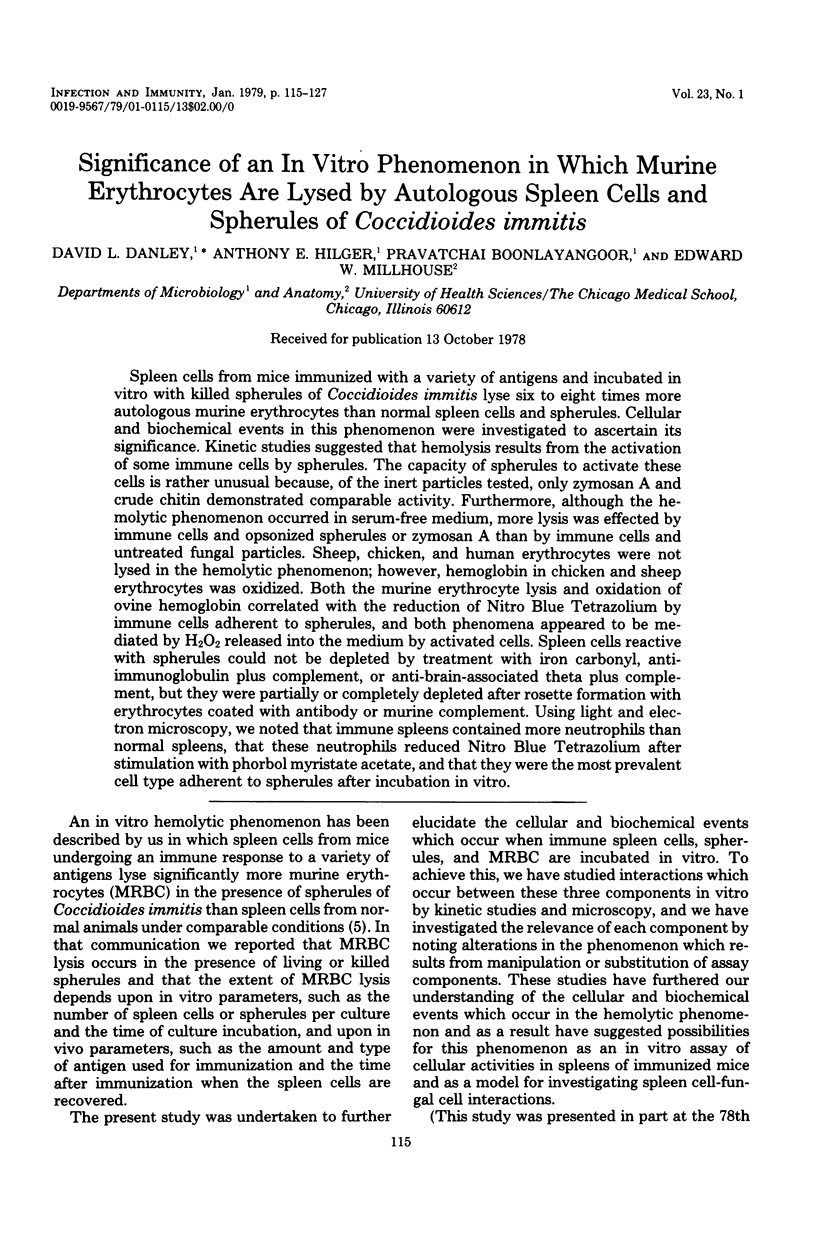
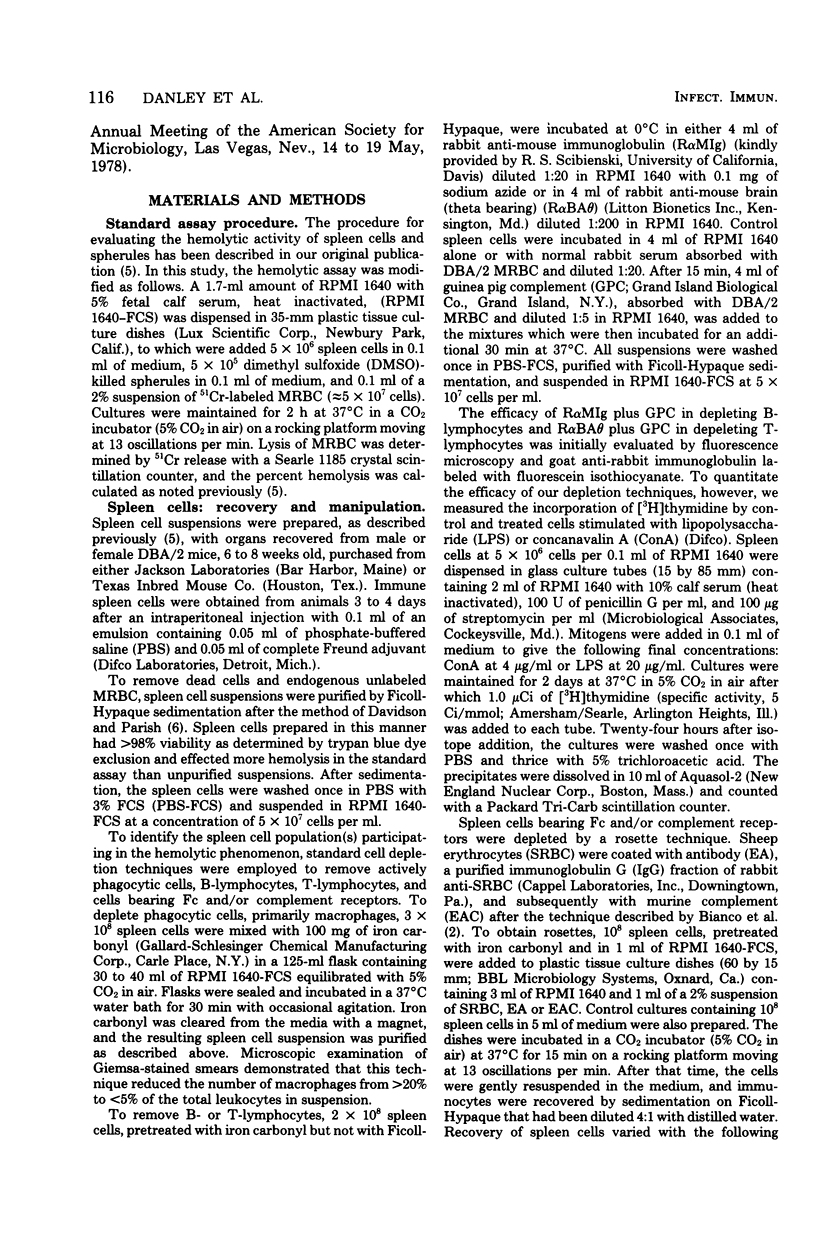
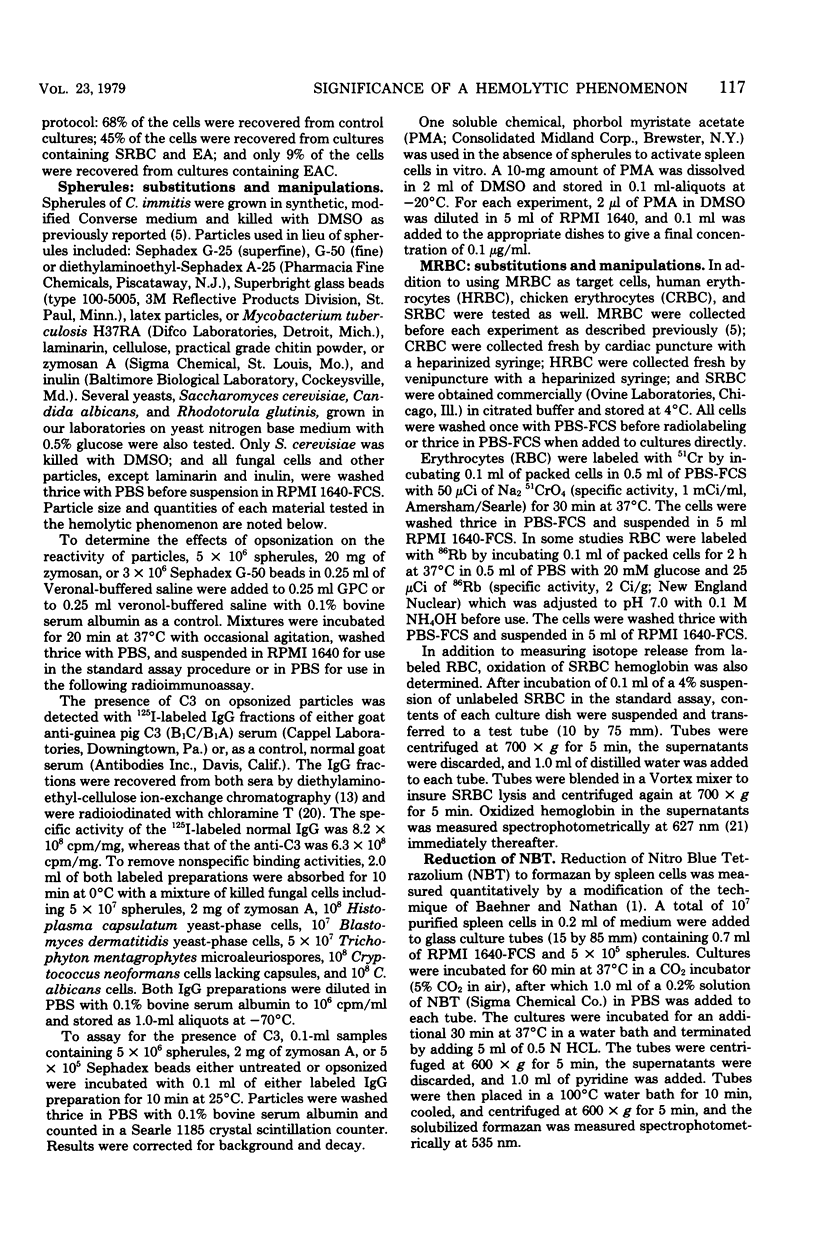
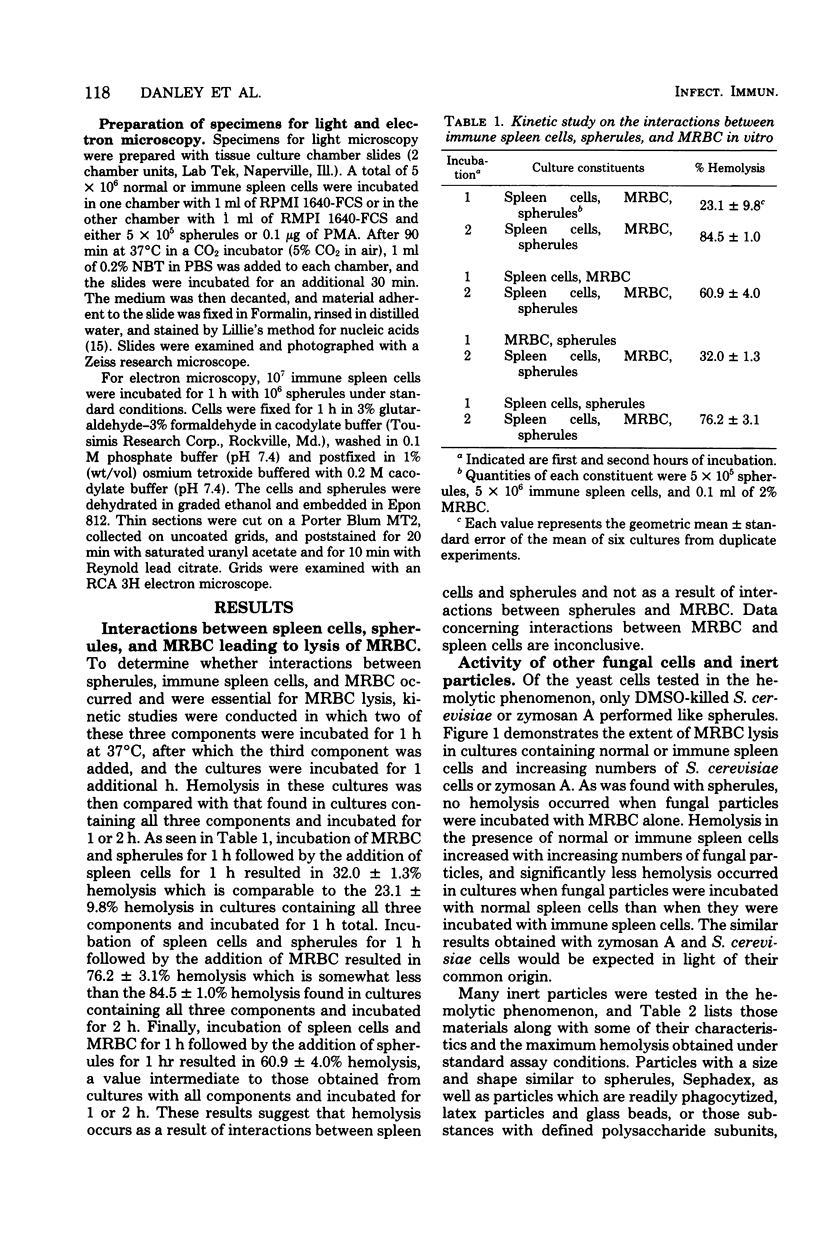
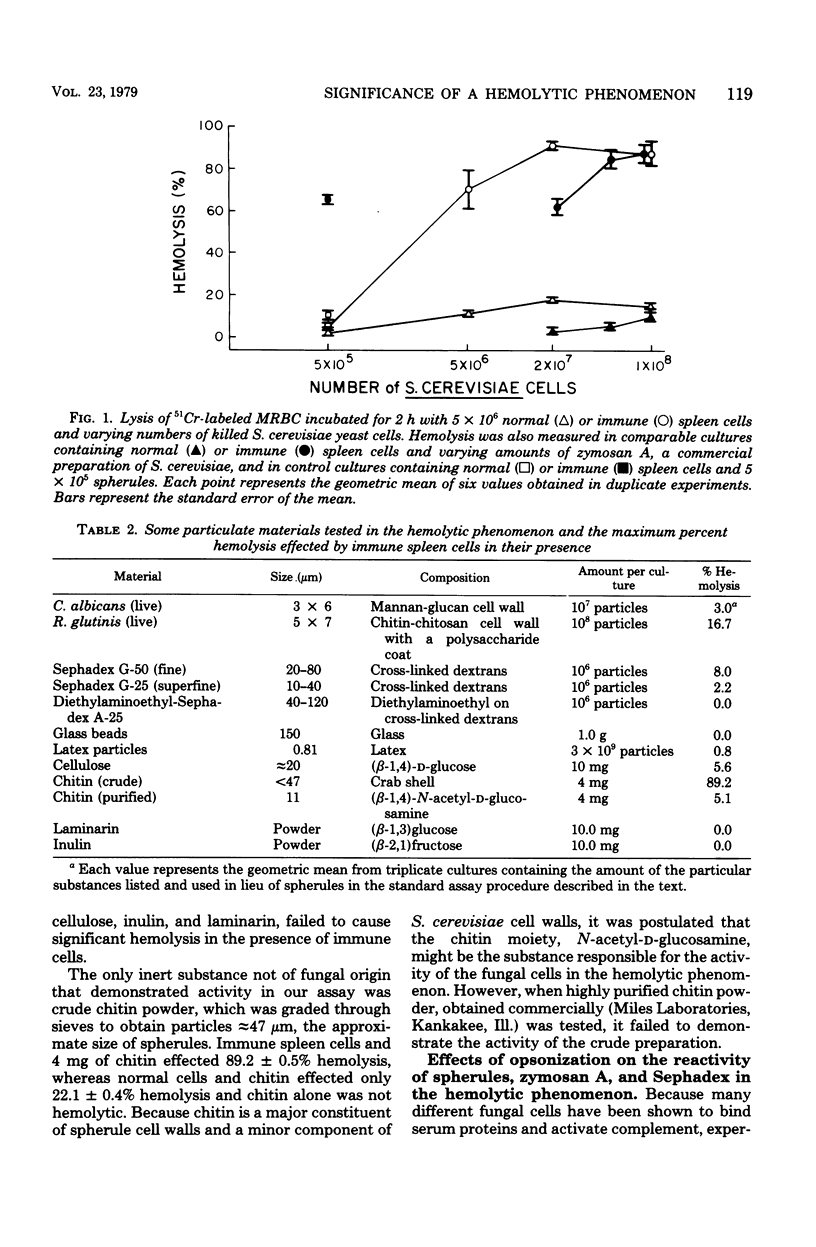
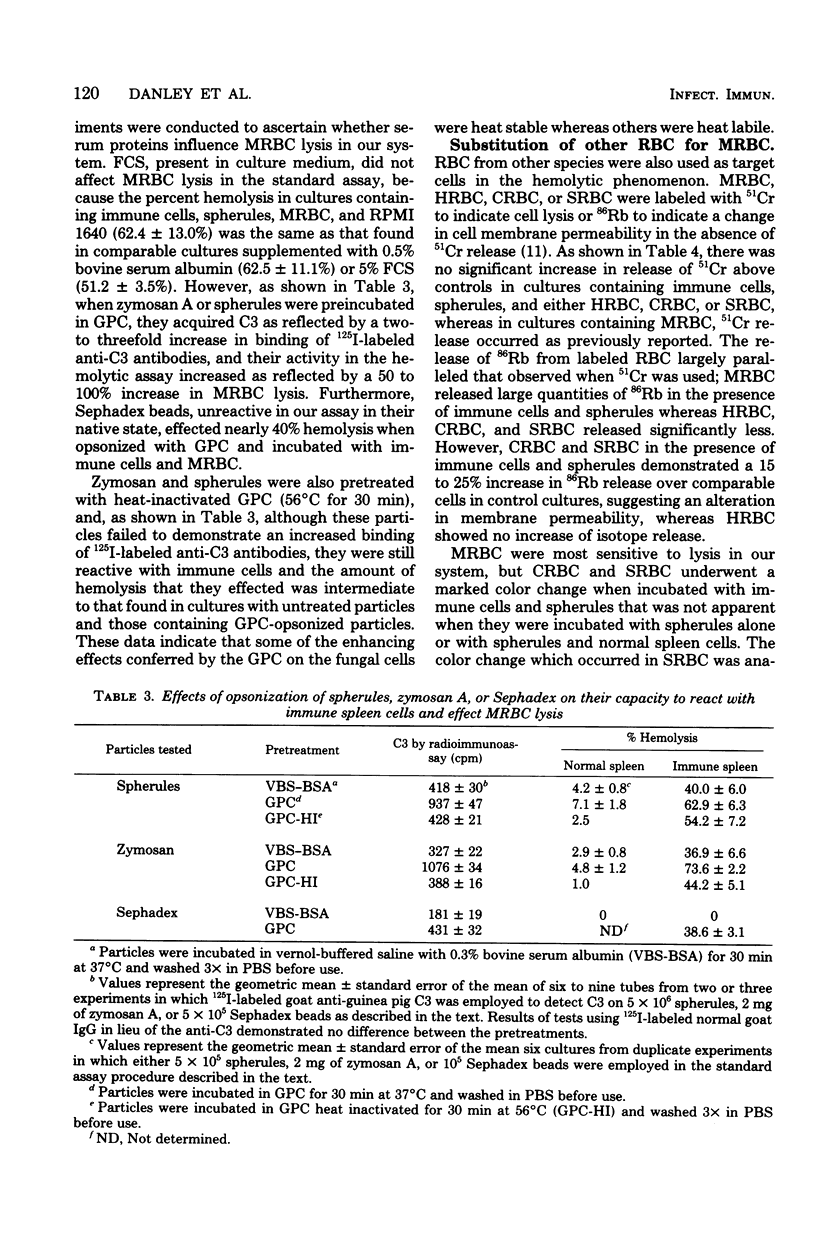
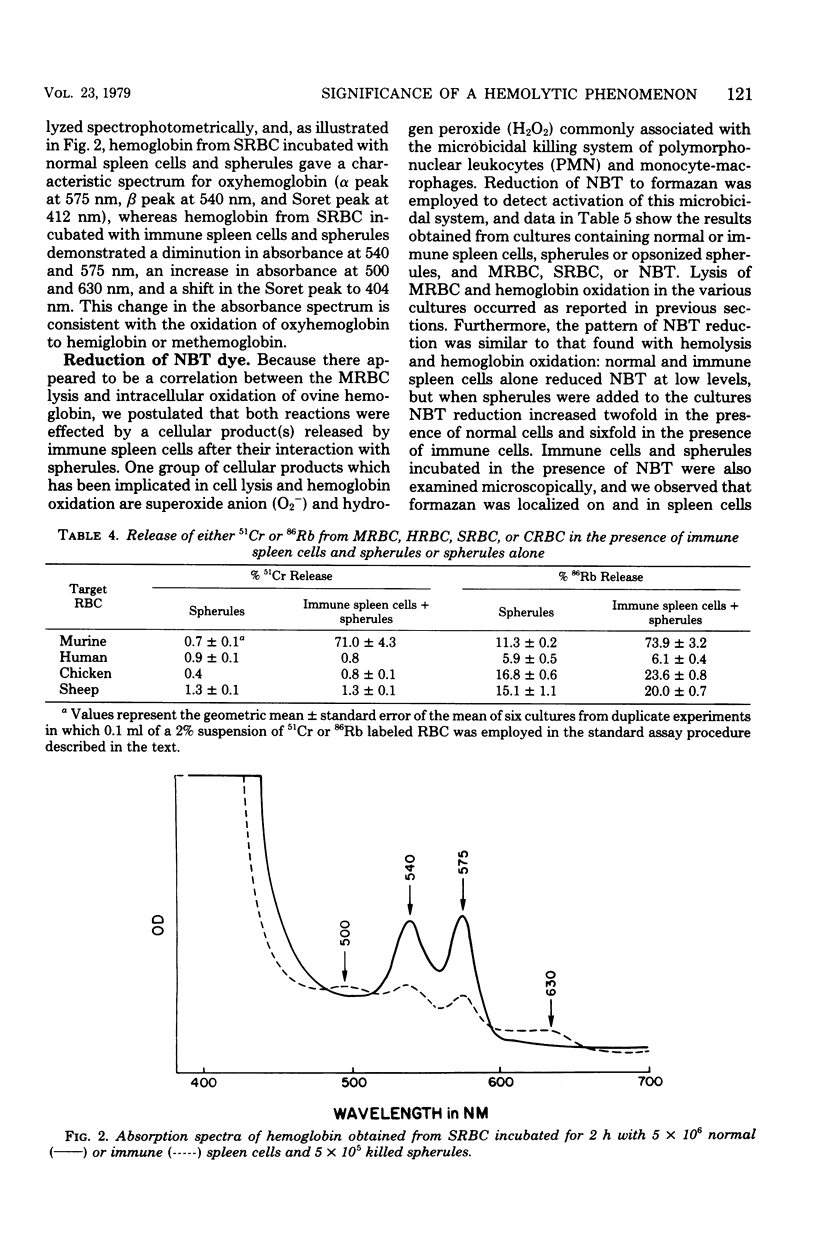
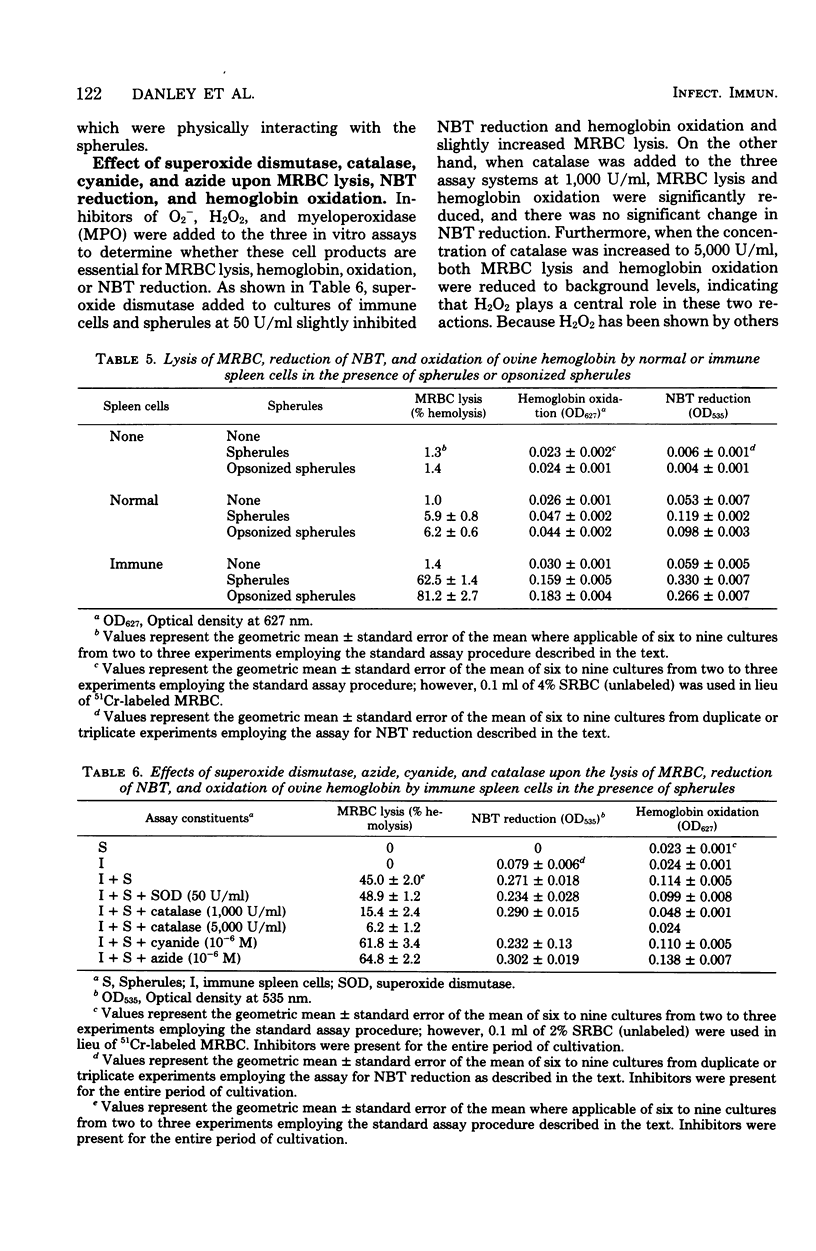
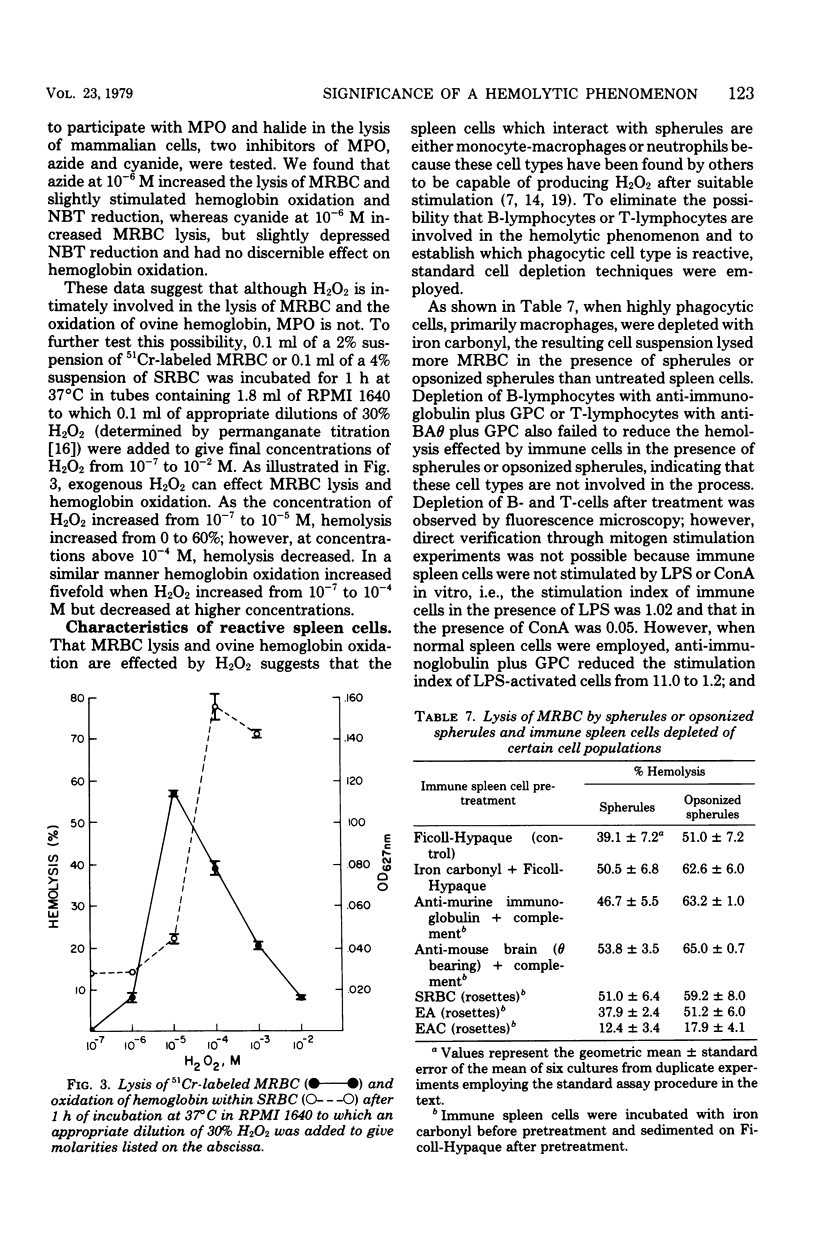
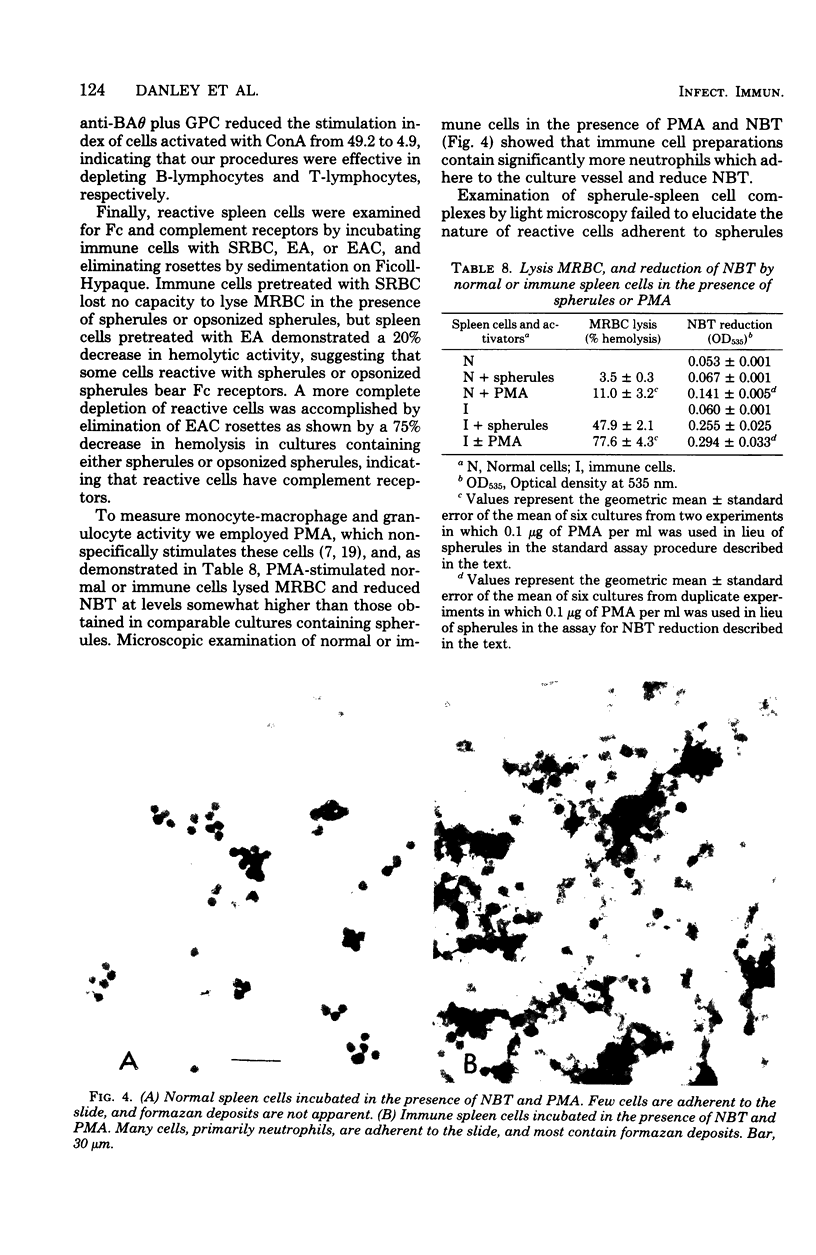
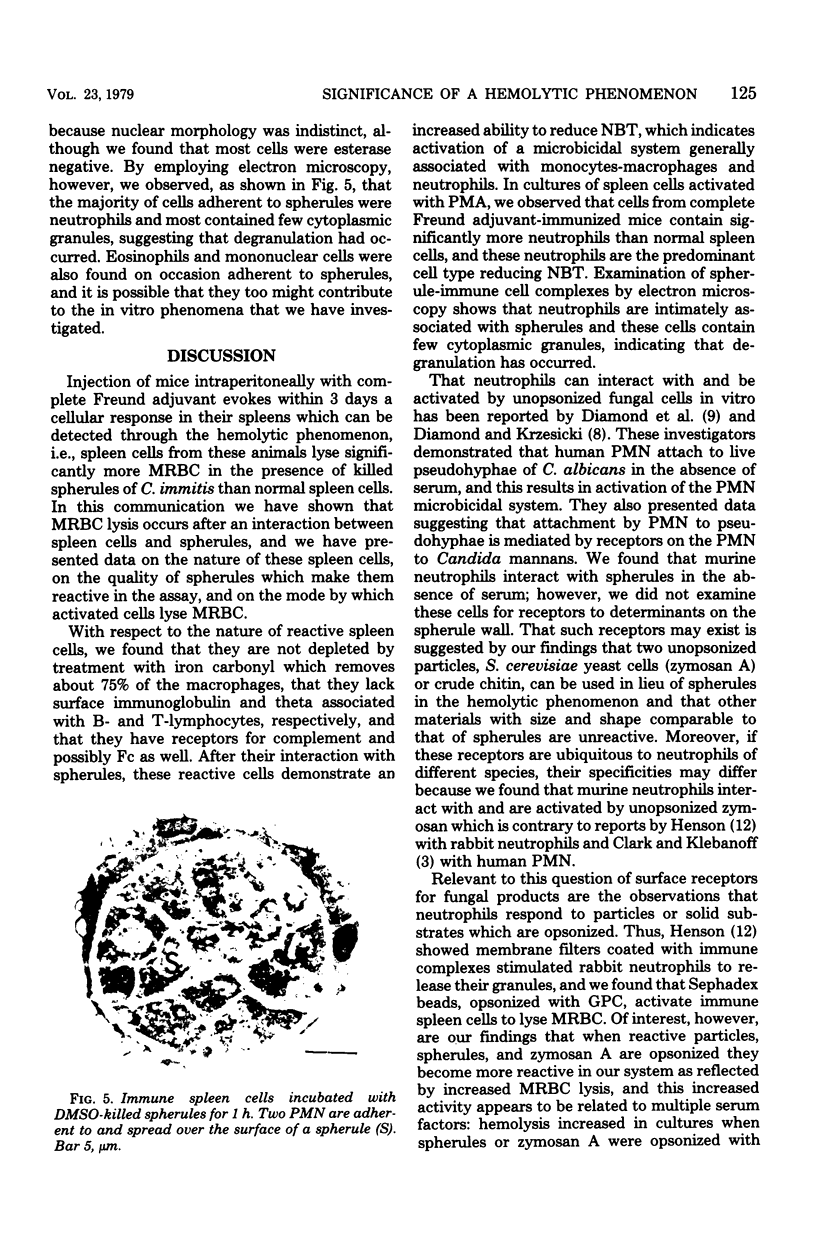
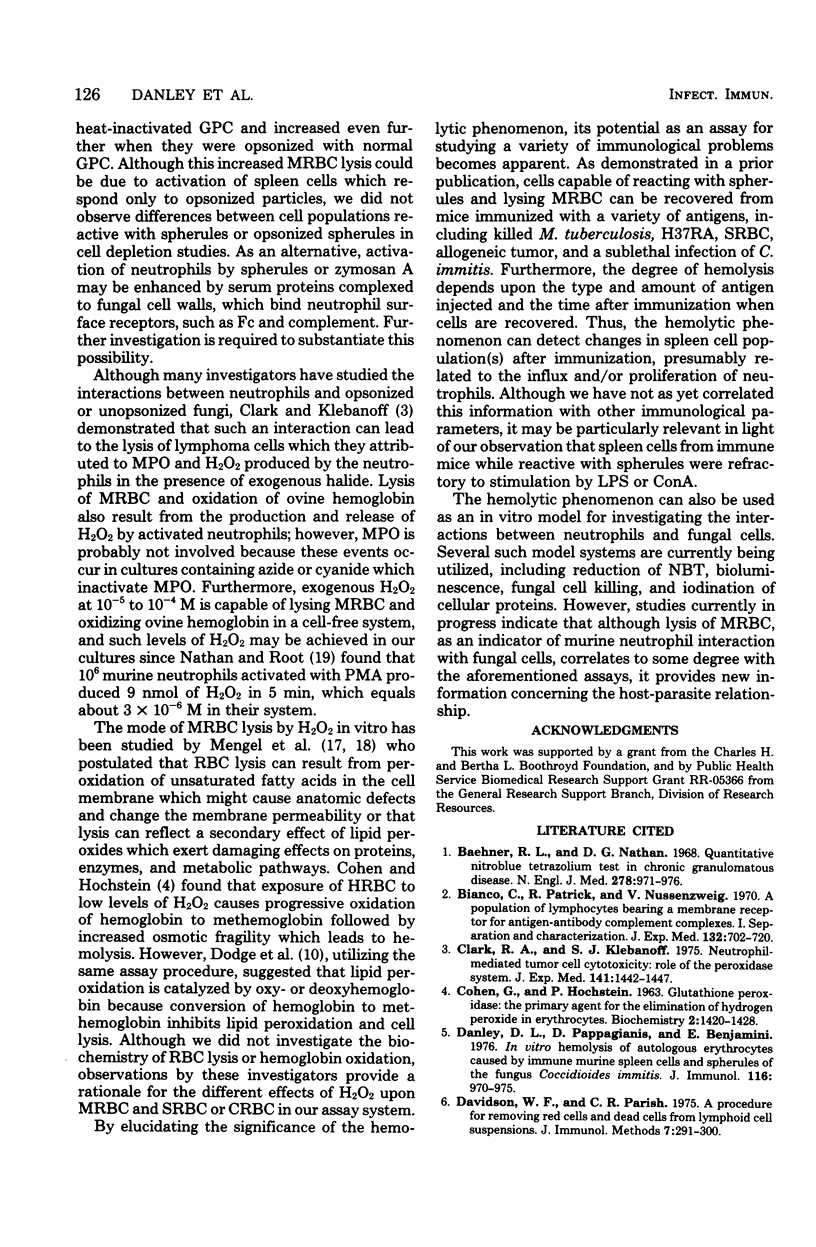
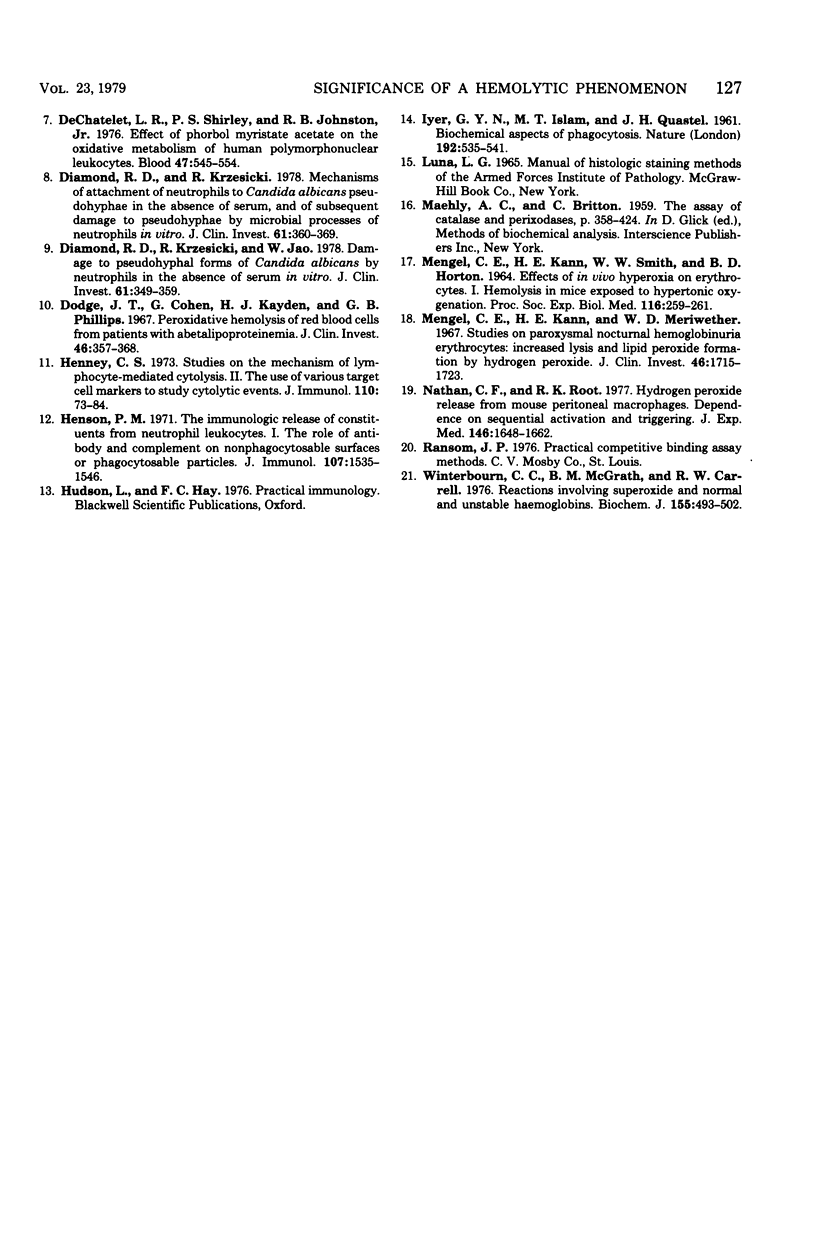
Images in this article
Selected References
These references are in PubMed. This may not be the complete list of references from this article.
- Baehner R. L., Nathan D. G. Quantitative nitroblue tetrazolium test in chronic granulomatous disease. N Engl J Med. 1968 May 2;278(18):971–976. doi: 10.1056/NEJM196805022781801. [DOI] [PubMed] [Google Scholar]
- Bianco C., Patrick R., Nussenzweig V. A population of lymphocytes bearing a membrane receptor for antigen-antibody-complement complexes. I. Separation and characterization. J Exp Med. 1970 Oct 1;132(4):702–720. doi: 10.1084/jem.132.4.702. [DOI] [PMC free article] [PubMed] [Google Scholar]
- COHEN G., HOCHSTEIN P. GLUTATHIONE PEROXIDASE: THE PRIMARY AGENT FOR THE ELIMINATION OF HYDROGEN PEROXIDE IN ERYTHROCYTES. Biochemistry. 1963 Nov-Dec;2:1420–1428. doi: 10.1021/bi00906a038. [DOI] [PubMed] [Google Scholar]
- Clark R. A., Klebanoff S. J. Neutrophil-mediated tumor cell cytotoxicity: role of the peroxidase system. J Exp Med. 1975 Jun 1;141(6):1442–1447. doi: 10.1084/jem.141.6.1442. [DOI] [PMC free article] [PubMed] [Google Scholar]
- Daimond R. D., Krzesicki R. Mechanisms of attachment of neutrophils to Candida albicans pseudohyphae in the absence of serum, and of subsequent damage to pseudohyphae by microbicidal processes of neutrophils in vitro. J Clin Invest. 1978 Feb;61(2):360–369. doi: 10.1172/JCI108946. [DOI] [PMC free article] [PubMed] [Google Scholar]
- Danley D. L., Pappagianis D., Benjamini E. In vitro hemolysis of autologous erythrocytes caused by immune murine spleen cells and spherules of the fungus Coccidioides immitis. J Immunol. 1976 Apr;116(4):970–975. [PubMed] [Google Scholar]
- Davidson W. F., Parish C. R. A procedure for removing red cells and dead cells from lymphoid cell suspensions. J Immunol Methods. 1975 Jun;7(2-3):291–300. doi: 10.1016/0022-1759(75)90026-5. [DOI] [PubMed] [Google Scholar]
- DeChatelet L. R., Shirley P. S., Johnston R. B., Jr Effect of phorbol myristate acetate on the oxidative metabolism of human polymorphonuclear leukocytes. Blood. 1976 Apr;47(4):545–554. [PubMed] [Google Scholar]
- Diamond R. D., Krzesicki R., Jao W. Damage to pseudohyphal forms of Candida albicans by neutrophils in the absence of serum in vitro. J Clin Invest. 1978 Feb;61(2):349–359. doi: 10.1172/JCI108945. [DOI] [PMC free article] [PubMed] [Google Scholar]
- Dodge J. T., Cohen G., Kayden H. J., Phillips G. B. Peroxidative hemolysis of red blood cells from patients with abetalipoproteinemia (acanthocytosis). J Clin Invest. 1967 Mar;46(3):357–368. doi: 10.1172/JCI105537. [DOI] [PMC free article] [PubMed] [Google Scholar]
- Henney C. S. Studies on the mechanism of lymphocyte-mediated cytolysis. II. The use of various target cell markers to study cytolytic events. J Immunol. 1973 Jan;110(1):73–84. [PubMed] [Google Scholar]
- Henson P. M. The immunologic release of constituents from neutrophil leukocytes. I. The role of antibody and complement on nonphagocytosable surfaces or phagocytosable particles. J Immunol. 1971 Dec;107(6):1535–1546. [PubMed] [Google Scholar]
- MENGEL C. E., KANN H. E., SMITH W. W., HORTON B. D. EFFECTS OF IN VIVO HYPEROXIA ON ERYTHROCYTES. 1. HEMOLYSIS IN MICE EXPOSED TO HYPERBARIC OXYGENATION. Proc Soc Exp Biol Med. 1964 Jun;116:259–261. doi: 10.3181/00379727-116-29218. [DOI] [PubMed] [Google Scholar]
- Mengel C. E., Kann H. E., Jr, Meriwether W. D. Studies of paroxysmal nocturnal hemoglobinuria erythrocytes: increased lysis and lipid peroxide formation by hydrogen peroxide. J Clin Invest. 1967 Nov;46(11):1715–1723. doi: 10.1172/JCI105662. [DOI] [PMC free article] [PubMed] [Google Scholar]
- Nathan C. F., Root R. K. Hydrogen peroxide release from mouse peritoneal macrophages: dependence on sequential activation and triggering. J Exp Med. 1977 Dec 1;146(6):1648–1662. doi: 10.1084/jem.146.6.1648. [DOI] [PMC free article] [PubMed] [Google Scholar]
- Winterbourn C. C., McGrath B. M., Carrell R. W. Reactions involving superoxide and normal and unstable haemoglobins. Biochem J. 1976 Jun 1;155(3):493–502. doi: 10.1042/bj1550493. [DOI] [PMC free article] [PubMed] [Google Scholar]




